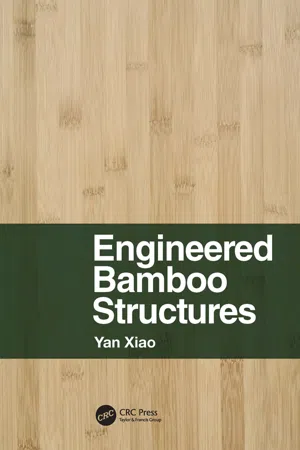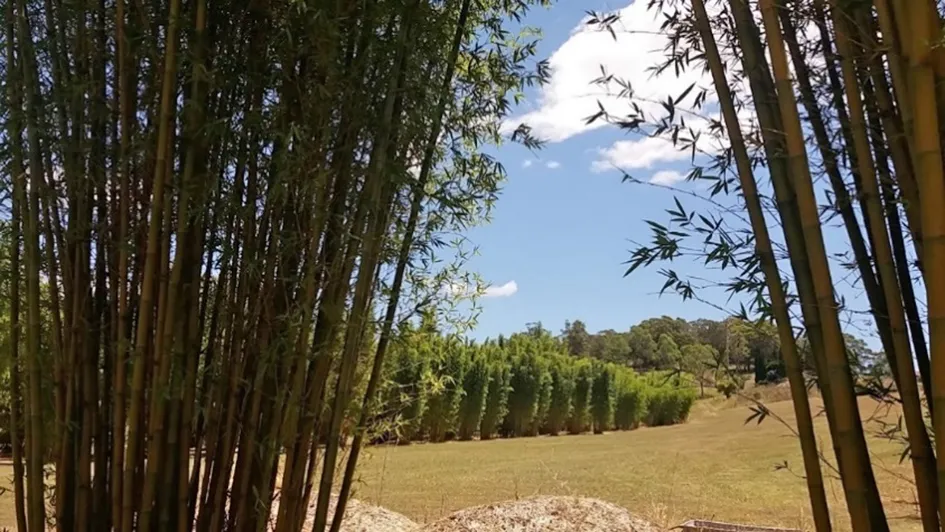
- 364 pages
- English
- ePUB (mobile friendly)
- Available on iOS & Android
Engineered Bamboo Structures
About this book
Bamboo is in the spotlight as a potential building material in the current pursuit of a CO2-neutral society, due to its rapid maturation and excellent mechanical properties. Despite the growing interest in bamboo in academia and society, there is a lack of systematic understanding of the fabrication, design and construction processes using bamboo as a modern industrial material. This is the first book to describe a new category of structural systems constructed with engineered bamboo. It gives a definition of engineered bamboo (glubam) in an analogy with steel structures and wood structures. Structural systems and components have been designed using glubam; then industrialized production processes of glubam are described. Based on state-of-the-art research, design guidelines are suggested, in a comparable and parallel approach to the existing guidelines for composite wood structures. The book also discusses bamboo structures in the context of sustainable development, including the benefits of using bamboo as an alternative or replacement for wood, especially for developing countries, many of which are faced with the lack or destruction of forest resources.
Frequently asked questions
- Essential is ideal for learners and professionals who enjoy exploring a wide range of subjects. Access the Essential Library with 800,000+ trusted titles and best-sellers across business, personal growth, and the humanities. Includes unlimited reading time and Standard Read Aloud voice.
- Complete: Perfect for advanced learners and researchers needing full, unrestricted access. Unlock 1.4M+ books across hundreds of subjects, including academic and specialized titles. The Complete Plan also includes advanced features like Premium Read Aloud and Research Assistant.
Please note we cannot support devices running on iOS 13 and Android 7 or earlier. Learn more about using the app.
Information
Chapter 1Bamboo for Carbon Neutral Development
1.1 Bamboo Resources
| Country/region | Area of bamboo (1000 ha) | |||||||
|---|---|---|---|---|---|---|---|---|
| 1990 | 2000 | 2005 | 2010 | |||||
| China | 3856 | 4869 | 5426 | 5712 | ||||
| India | 5116 | 5232 | 5418 | 5476 | ||||
| Total Asia (incl. China and India) | 15,412 | 16,311 | 16,943 | 17,360 | ||||
| Total Europe | 0 | 0 | 0 | 0 | ||||
| Total North and Central America | 37 | 37 | 37 | 39 | ||||
| Total Africa | 3688 | 3656 | 3640 | 3627 | ||||
| Total Oceania | 23 | 38 | 45 | 45 | ||||
| Total South America | 10,399 | 10,399 | 10,399 | 10,399 | ||||
| World | 29,560 | 30,442 | 31,065 | 31,470 | ||||
Source: FAO (2010).[2] | ||||||||


Table of contents
- Cover
- Half-Title Page
- Title Page
- Copyright Page
- Dedication
- Contents
- Preface
- Acknowledgements
- About the author
- Introduction
- Chapter 1 Bamboo for Carbon Neutral Development
- Chapter 2 Production of Engineered Bamboo
- Chapter 3 Material Properties of Glubam
- Chapter 4 Design Strength of Glubam
- Chapter 5 Connections in Glubam Structures
- Chapter 6 Performance of Glubam Structural Members
- Chapter 7 Glubam Trusses
- Chapter 8 Engineered Bamboo Structural Walls
- Chapter 9 Design and Construction of Engineered Bamboo Structures
- Index